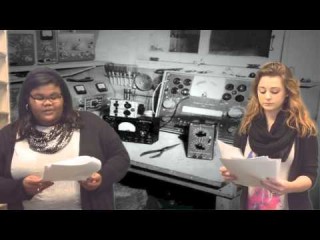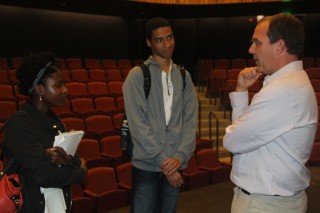The timelines that historians use to visualize change over time can be baffling to sixth graders. How can a person who has been alive for eleven years conceptualize millions of years of life on earth? Or understand how comparatively brief man’s time on earth has been? “I always taught the concepts of scale and sense of time in the classroom,” reflects sixth grade World Cultures teacher Merideth Ostrer, “but for most kids, the lessons didn’t stick.”
With the mantra of “When I do, I understand”, she decided to use her students and the St. Luke’s football field to create a “Human Timeline”. In advance, each student was assigned to research and illustrate an event from human prehistory or history. To better understand the concept of scale, the class discussed building with legos, model airplanes, and dolls, and studied videos wherein the history of the world is scaled down to several minutes. From there, they worked in small groups to calculate what scale they would use to represent 200,000 years of Homo sapiens on a 100-yard field.
In planning and creating the Human Timeline, Merideth hopes that her students learned two things beyond time and scale. She hopes that the lonely student at the start of the timeline and those crammed together at the end understand that life, technology, and society grow more complex over time. Also in the words of a St. Luke’s sixth grader, “Human history, in comparison to the whole world’s history, is so small.”



Love the idea! But there are some editing issues to fix with audio out of sync with video
Hi, Grant Wiggins – thank you for the comments. I’ve noticed most videos experience some degradation due to compression when uploading to the NAIS site. You can watch in HD here on our Vimeo account:
Thanks again!